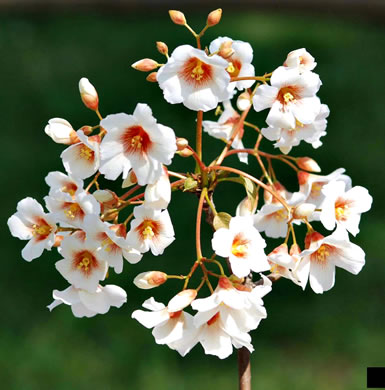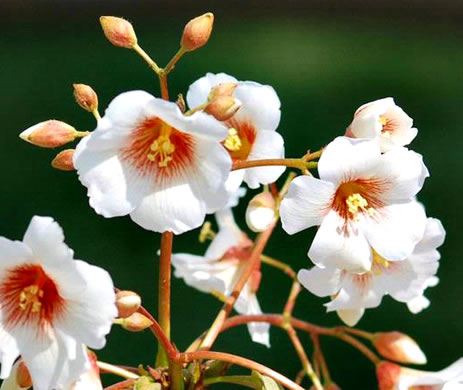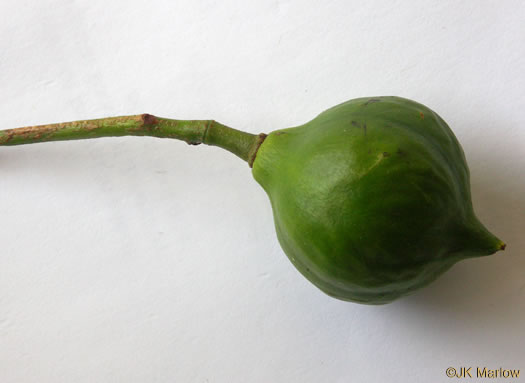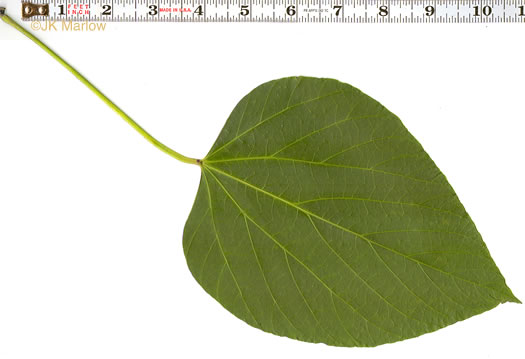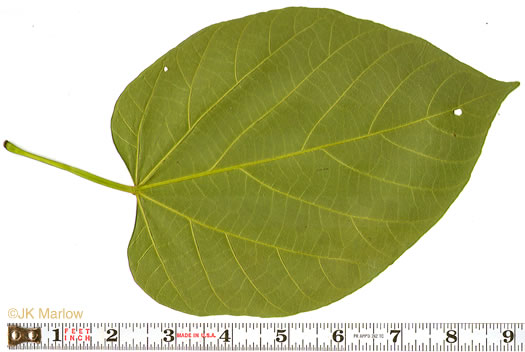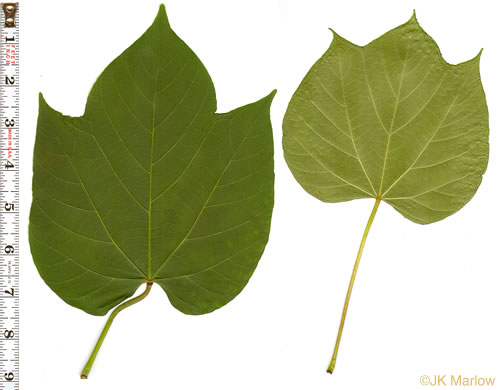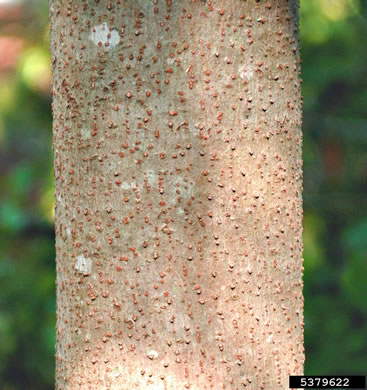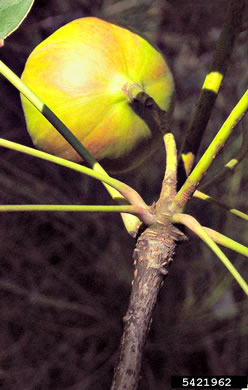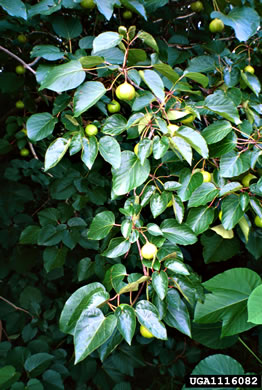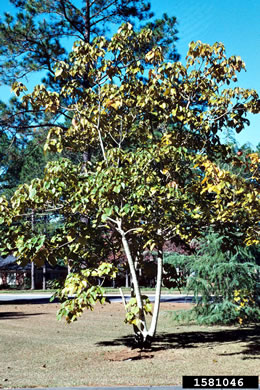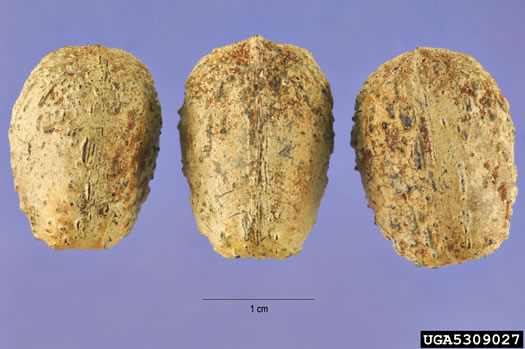Spermatophytes (seed plants): Angiosperms (flowering plants): Eudicots: Core Eudicots: Rosids: Fabids: Malpighiales
WEAKLEY'S FLORA OF THE SOUTHEASTERN US (4/24/22):
Vernicia fordii
FAMILY
Euphorbiaceae
Go to FSUS key
Dig deeper at SERNEC, a consortium of southeastern herbaria.
See more pictures at www.invasive.org.
Check out EDDMapS.org to see where this has been reported.
Read more about Vernicia at Vascular Plants of North Carolina.
SYNONYMOUS WITH
PLANTS NATIONAL DATABASE:
Vernicia fordii
FAMILY
Euphorbiaceae
SYNONYMOUS WITH Floristic Synthesis of North America. BONAP (Kartesz, 2021)
Vernicia fordii
SYNONYMOUS WITH Flora of North America north of Mexico, vol. 12 (2016)
Vernicia fordii
SYNONYMOUS WITH Guide to the Vascular Plants of Florida (Wunderlin & Hansen, 2003)
Aleurites fordii
COMMON NAME:
Tung-oil Tree
To see larger pictures, click or hover over the thumbnails.
James H. Miller, USDA Forest Service, Bugwood.org bug_5379625
April?
Large, terminal, branched clusters appear before the leaves, covering tree, per A Field Guide for the Identification of Invasive Plants in Southern Forests (Miller, Chambliss, & Lowenstein, 2010).
James H. Miller, USDA Forest Service, Bugwood.org bug_5379625b
April?
White petal lobes, throat splashed w red to maroon, lines radiating outward, per A Field Guide for the Identification of Invasive Plants in Southern Forests (Miller, Chambliss, & Lowenstein, 2010).
JK Marlow jkm090514_101
May Georgetown County SC
Hobcaw Barony
Fruit drops whole, then splits into 3-7 wedge-shaped sections each w a nut, per A Field Guide for the Identification of Invasive Plants in Southern Forests (Miller, Chambliss, & Lowenstein, 2010).
JK Marlow s090514_1920
May Georgetown County SC
Hobcaw Barony
Leaves heart-shaped, or lobed with 3-5 pointed tips and a cordate base, per A Field Guide for the Identification of Invasive Plants in Southern Forests (Miller, Chambliss, & Lowenstein, 2010).
James H. Miller, USDA Forest Service, Bugwood.org bug_5379622
August
Bark light tan to light gray, tight, covered with corky dots, per A Field Guide for the Identification of Invasive Plants in Southern Forests (Miller, Chambliss, & Lowenstein, 2010).
Charles T. Bryson, USDA Agricultural Research Service, Bugwood.org bug_1116082
Month Unknown
Leaves and nuts are poisonous, per A Field Guide for the Identification of Invasive Plants in Southern Forests (Miller, Chambliss, & Lowenstein, 2010).
WEAKLEY'S FLORA OF THE SOUTHEASTERN US (4/24/22):
Vernicia fordii
FAMILY
Euphorbiaceae
SYNONYMOUS WITH
PLANTS NATIONAL DATABASE:
Vernicia fordii
FAMILY
Euphorbiaceae
SYNONYMOUS WITH
Floristic Synthesis of North America. BONAP (Kartesz, 2021)
Vernicia fordii
SYNONYMOUS WITH
Flora of North America north of Mexico, vol. 12
Vernicia fordii
SYNONYMOUS WITH
Guide to the Vascular Plants of Florida (Wunderlin & Hansen, 2003)
Aleurites fordii
If a search such as "Carex leptalea var. leptalea" doesn't deliver the results you want, try "Carex leptalea".
Or, to minimize chances of a misspelling, try just "Carex le".
Less is more: If "pencil flower" doesn't deliver the results you want, try "pencil".

